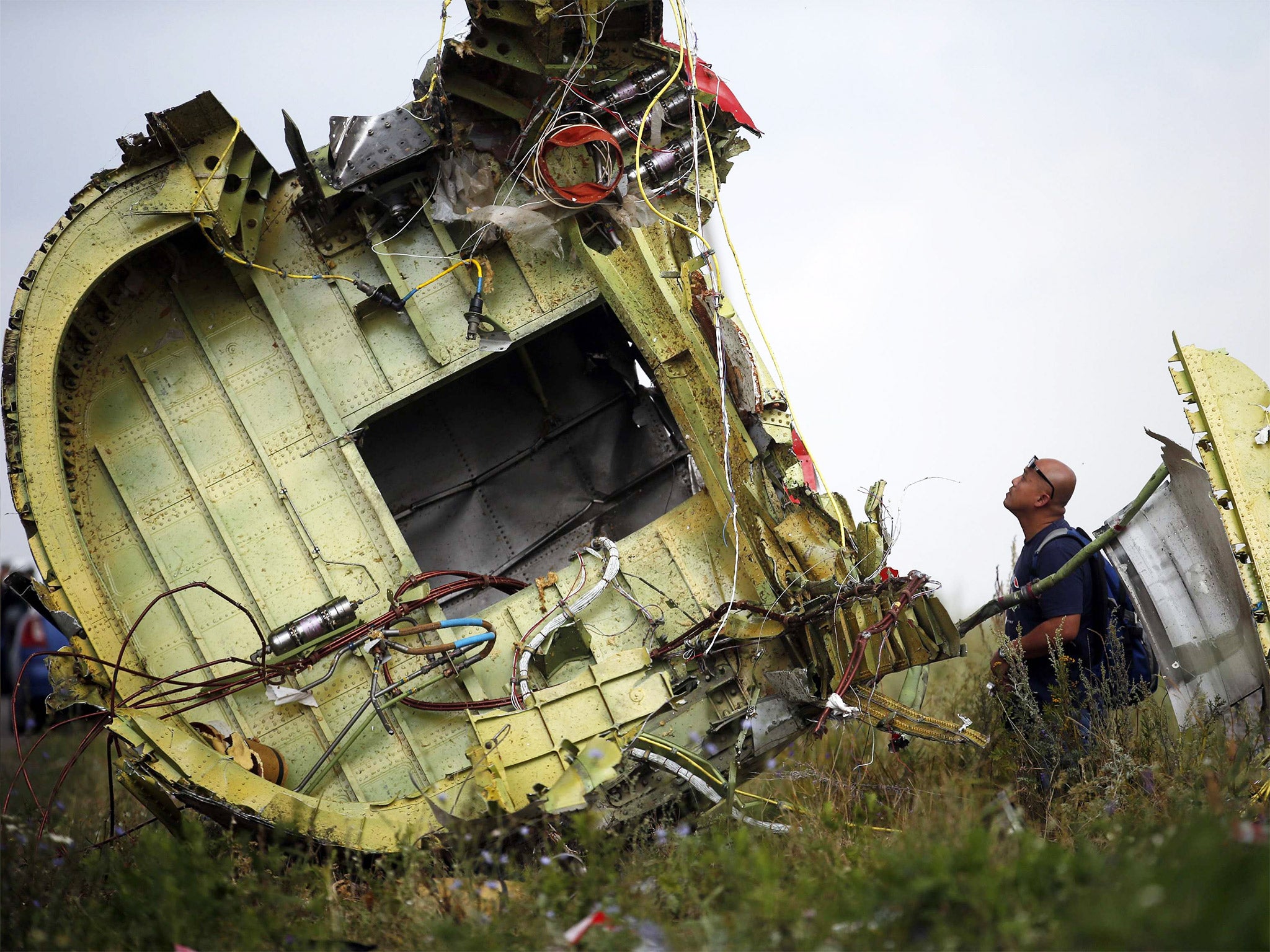MH17 Q&A: Who brought down Malaysia Airlines jet and other unanswered questions one year on
Two separate inquiries are continuing into the doing of the Boeing 777

As investigators continue to probe the downing of Malaysia Airlines MH17 a year ago, relatives of some of the 298 people who lost their lives have launched a lawsuit seeking damages.
Floyd Wisner, the Chicago lawyer leading the legal action, told The Independent that one of the intentions of the suit was to provide answers to some of the questions that are still outstanding.
Here are some of the questions people are still asking about the doomed flight:
Q: Who brought down the plane?
A: Remarkably, there is still no agreement on this. The US has said the plane was all but certainly brought down by a Russian-backed rebels based in the east of Ukraine, most likely by a BUK surface-to-air missile. Both Russia and the rebels of the Donetsk People’s Republic (DPR) have denied it. The preliminary report of an international probe headed by the Dutch Safety Board and released last September said the plane had no mechanical or other technical problem in the seconds before it broke up after being struck by multiple “high-energy objects from outside the aircraft”. A leak of the final report suggests the rebels were to blame.
Q: What public evidence is there against the rebels?
A: There are images of BUK ordinance in an areas close to where the plane came at the time of the incident. Ukrainian intelligence officials in Kiev released audio recordings of rebel commanders discussing the downing of what was thought to be a Ukrainian military transport plane, and subsequent conversations that suggested they had realised their error. Rebel leader Igor Girkin – better known as Strelkov – posted a message on Russian social network VKontakte, where he claimed the downed aircraft was an Antonov-26. The swiftly-deleted post, accompanied by a video of rising smoke, said: “We warned them - don’t fly in our sky.” A lawsuit has been filed in Chicago by family members against Mr Girkin.
Q: Why was the Boeing 777 heading from Amsterdam to Kuala Lumpur flying over a war zone?
A: Basically because it was the most direct (and therefore, cheapest) route. Indeed, flight path L980 was the route used many passenger jets travelling between European cites and South Asia. Observers pointed out that wars on the ground rarely affect the routes of commercial aircraft. Planes continued to fly over Afghanistan at the height of fighting. No no-fly zone had been declared by the International Civil Aviation Organisation, and although a “notice to airmen” (NOTAM) placed eastern Ukrainian airspace off limits up to 32,000 feet, MH17 was flying at 33,000 feet.
Q: What happened to the remains of the 298 passengers and crew?
A: Access to the site for investigators was initially very difficult as it was – and still is - under the control of rebels, who were the first to try and recover the remains of the dead. Gradually, international experts were able to visit. Earlier this year it was reported that Dutch experts had positively identified remains of all but two of the people who died.
Q: Who is leading the inquiry?
A: There are two separate investigations, both headed by the Dutch authorities. One, headed by the Dutch Safety Board into the cause of the crash, is due to be published in October. A second investigation - a criminal inquiry – will not be completed until the end of the year.
Q: Will the perpetrators ever face justice?
A: Russia said last week it opposed a UN resolution that would establish an international tribunal to prosecute those responsible for shooting down MH17. The resolution was prepared by the five countries investigating the crash - Malaysia, Ukraine, Netherlands, Australia and Belgium. It was drafted drafted under Chapter 7 of the UN Charter, which can be enforced militarily. Russia’s deputy UN Ambassador Petr Iliichev told reporters he would oppose adoption of the resolution. “It’s not a good time and it’s counterproductive,” he said.
Subscribe to Independent Premium to bookmark this article
Want to bookmark your favourite articles and stories to read or reference later? Start your Independent Premium subscription today.

Join our commenting forum
Join thought-provoking conversations, follow other Independent readers and see their replies